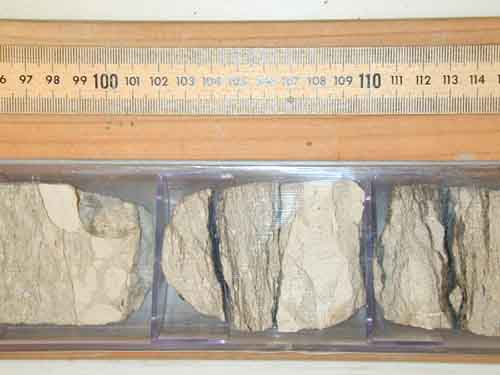|
|
Data & Samples > Core Samples > Gulf Coast Repository >
GCR Display Cores
Section 143-866A-98R-1

Location
North rim of the summit of the Resolution Guyot in the western Mid-Pacific
Mountains.
Lithology
77R-1 Massive Oolitic Grainstone.
110R-2 Algal laminates-alternating clay rich organic rich and carbonate mudstones. Rhytmic latering may be due to tidal cycles.
167R-3 Dolomatised Oncoidal Rudstone
Interpretation
The Western Pacific is strewn with
chains and clusters of seamounts, many of which are now flat- topped guyots,
with summit depths of about 1500 m, capped by shallow-water carbonate platform
sediments overlying volcanic substrate. Guyot sediments can monitor subsidence
rates and relative changes in sea level for times when upward carbonate-platform
growth paced the tectonic subsidence of their foundations and the volcanic
pedestals preserve clues to the nature of their parent mantle materials and the
processes of melt extraction and differentiation. Studying the origin of these
guyots contributes to the concepts of seafloor spreading, hot spots, thermal
subsidence and crustal thinning, and superswells, and may determine why the
platform, after constructing a massive carbonate cap, suddenly ceased to keep
pace with subsidence and why the apparent ages of the underlying volcano and the
shallow-water cap lack the coherent patterns predicted from hot-spot and
subsidence theories. During Leg 143, six sites were drilled on Allison and
Resolution guyots in the Mid-Pacific Mountains (MPM) (Site 865 to Site 868), on
the sediment apron flanking the Wodejebato Guyot-Pikinni Atoll pair (Site 869),
and within the lagoon of a modern Marshall Islands atoll (Site 870).
|

